
Get Rid Of Creative Blocks: Organize Your Game Design Idea For Maximum Efficiency
One of the most annoying and frequent issues faced by game creators is creative blocks. It’s hard enough to come up with a great idea for a game, but trying to collect all of the necessary pieces and parts for it can be even more daunting. That’s why organizing game design ideas is such a key component in design inspirations.
Having an organized system in place makes it much easier to find sources of inspiration and create a starting point for your project. In this blog post, we’ll look at how you can organize your game design inspiration in order to maximize efficiency and get rid of creative blocks.
Why Is It Important?
It goes without saying that having a well-organized system for your game design inspiration not only helps you keep track of your ideas and assets, but it also saves you time and reduces stress. Organizing your game design inspiration is important for a number of reasons:
- First, it gives you a reference library to draw from when you're feeling stuck or uninspired.
- Second, it also helps you keep track of concepts and ideas you want to research further.
- Third, by storing gaming inspirations in one place, you can easily share them with others (such as collaborators or mentors).
Finally, arranging your inspirations might simply improve the effectiveness and fun of the creative process. Your game design inspirations can be organized in a variety of ways. One popular method is to create a physical mood board; another is to maintain digital folders or Pinterest boards.
Whichever method you choose, the important thing is that you take the time to regularly update and add to your collection. Over time, you'll build up an impressive bank of resources that you can refer back to again and again.
What Are The Benefits Of Organizing Game Assets?
While you understand how crucial it is to have your assets arranged and in working order, have you ever given it some thought as to why organizing them is so important? The advantages of arranging your game materials are numerous and diverse, and they can greatly influence the outcome of your project.
Your productivity and efficiency can be increased by having a well-organized asset library, to start. The assets you require will be simple to find, saving you time and effort.
And when it comes to collaboration, a structured asset library can make it easier for team members to work together and ensure everyone is on the same page.
On top of all that, proper asset organization can help reduce errors and improve project management, leading to a smoother development process and a better end product. So, if you want to take your game development to the next level, it's definitely worth investing some time and effort into organizing your assets!
How to Organize Your Game Design Ideas?
Assuming you have a method for generating game design ideas, it's important to have a system for organizing those ideas so you can easily find and reference them later. Here are a few tips for organizing your game design ideas:
Step 1 Create and Decide a Main Folder Structure
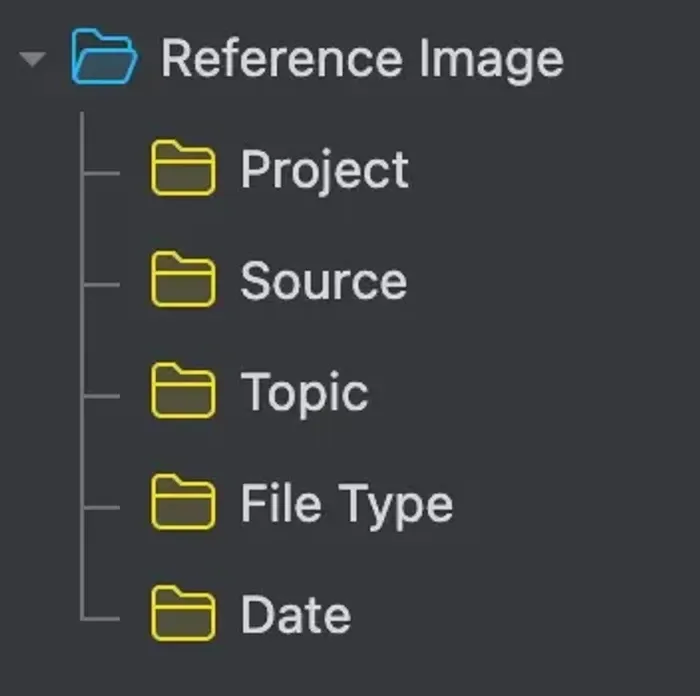
Image from Eagle - Hierarchical system
The first step to organize game design inspirations is to create a main folder structure. All of your additional folders and files will be created from this point forward. You must choose the system you want to employ for this. Simply choose the approach that works best for you from the many available options.
Using a hierarchical structure is one technique to build a main folder structure. This means that you have a main folder, with sub-folders beneath it. Each sub-folder can contain its own set of sub-folders and files. This system can be as simple or complex as you want it to be.
Another way to create a main folder structure is to use a flat system. This means that you have one main folder, with all of your other folders and files inside of it. This system is simpler than the hierarchical system, but it can be more difficult to keep track of everything.
Once you've selected a system, you must begin making folders and adding files to them. Don't worry about putting everything in its perfect place right away. If necessary, you can always reorganize things in the future. Just getting started and organizing things is crucial.
Step 2 Establish Naming Conventions
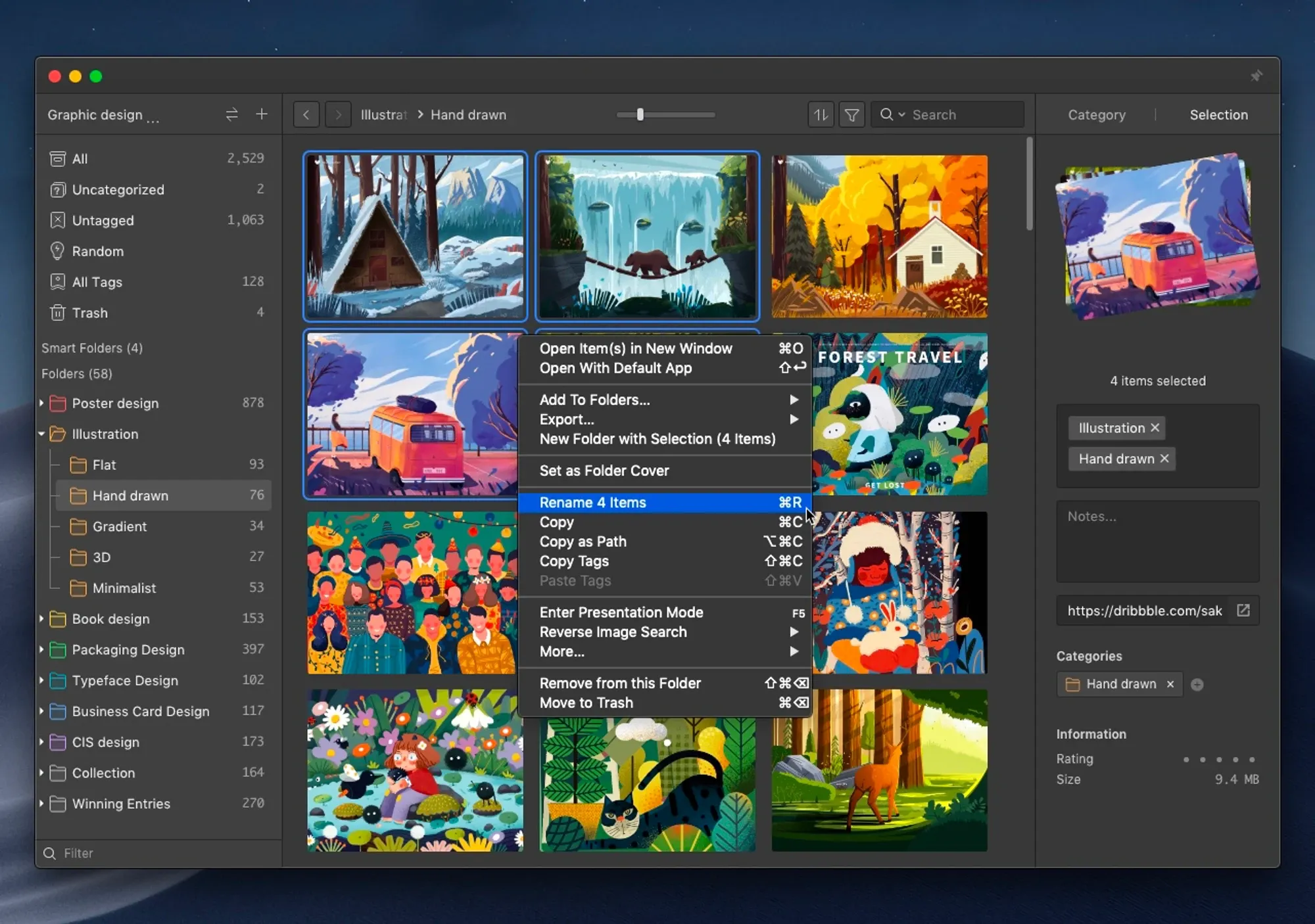
Image from Eagle - Batch rename
When it comes to creative blocks, one of the main culprits is disorganization, however the best way to overcome this obstacle is to establish some naming conventions for your game design folders and files. This will help you keep track of everything in one place and make it easier to find what you're looking for when you need it.
Here are a few tips for establishing naming conventions:
- Keep it simple : A convoluted, hard-to-remember method is the last thing you need. Stick with something straightforward that you can easily implement.
- Use keywords : When you're trying to come up with a name for something, think about what keywords would be most relevant to the ideas. This will make it easier to search for later on.
- Be consistent : Once you've established a naming convention, stick with it! Consistency is key when it comes to organization.
- Make backups : Keep numerous copies of your work at all times in case something goes wrong. You don't want to lose all your progress because of a technical issue!
Step 3 Choose the Right File Format for Each Asset
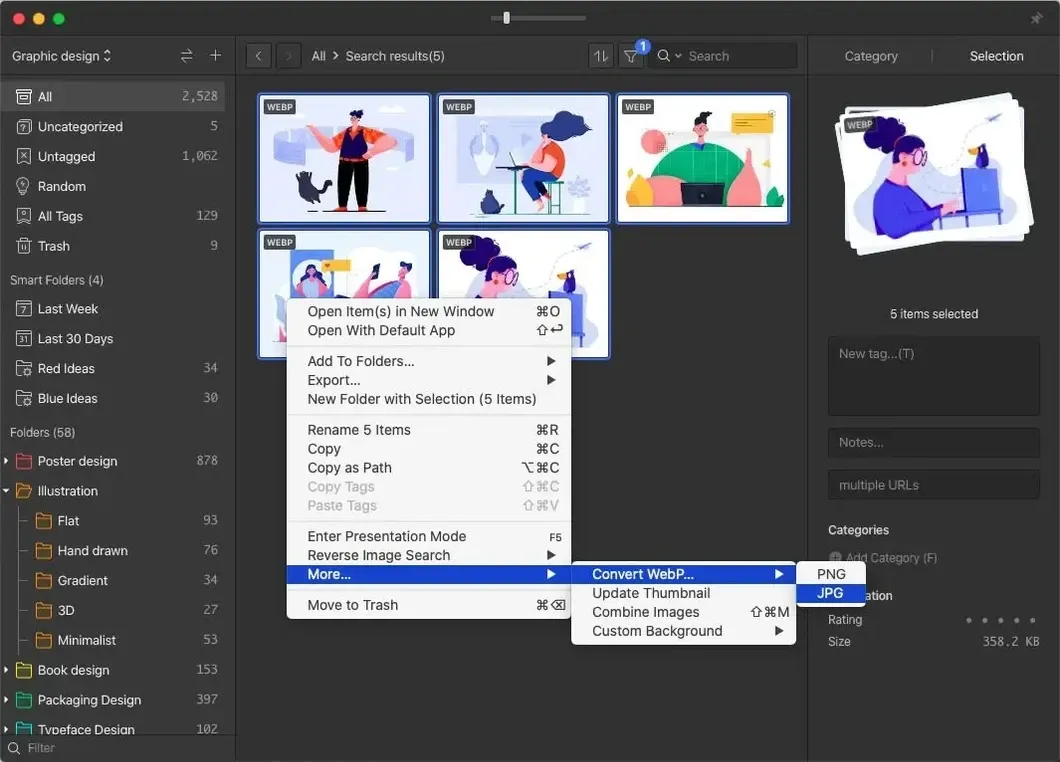
Image from Eagle - Choosing the right file format
There are a few key things to keep in mind when choosing file formats for each asset in your game design inspiration library.
First, consider what format will be most compatible with the game design management software you're using. Many programs can read and write multiple file formats, but some may only work with specific formats.
Second, think about what kind of features you need from a file format. Some formats allow for lossless compression, meaning that there is no quality lost when the file is compressed. This is important for image files, for example. Other formats are designed to be as small as possible, which can be useful for audio or video files.
Finally, some file formats are proprietary, meaning they can only be used with certain programs or devices. This isn't necessarily a bad thing, but it's something to be aware of. With all of these factors in mind, here are some common file formats and their uses:
- Images : JPEG (lossy compression), PNG (lossless compression), GIF (lossless compression), TIFF (lossless compression)
- Audio : MP3 (lossy compression), WAV (lossless uncompressed), AIFF (lossless uncompressed)
- Video : MPEG-4 (lossy compression), AVI (uncompressed or lightly compressed), WMV (proprietary format)
Step 4 Categorize Game Assets With Folders, Tags, and Preview Images
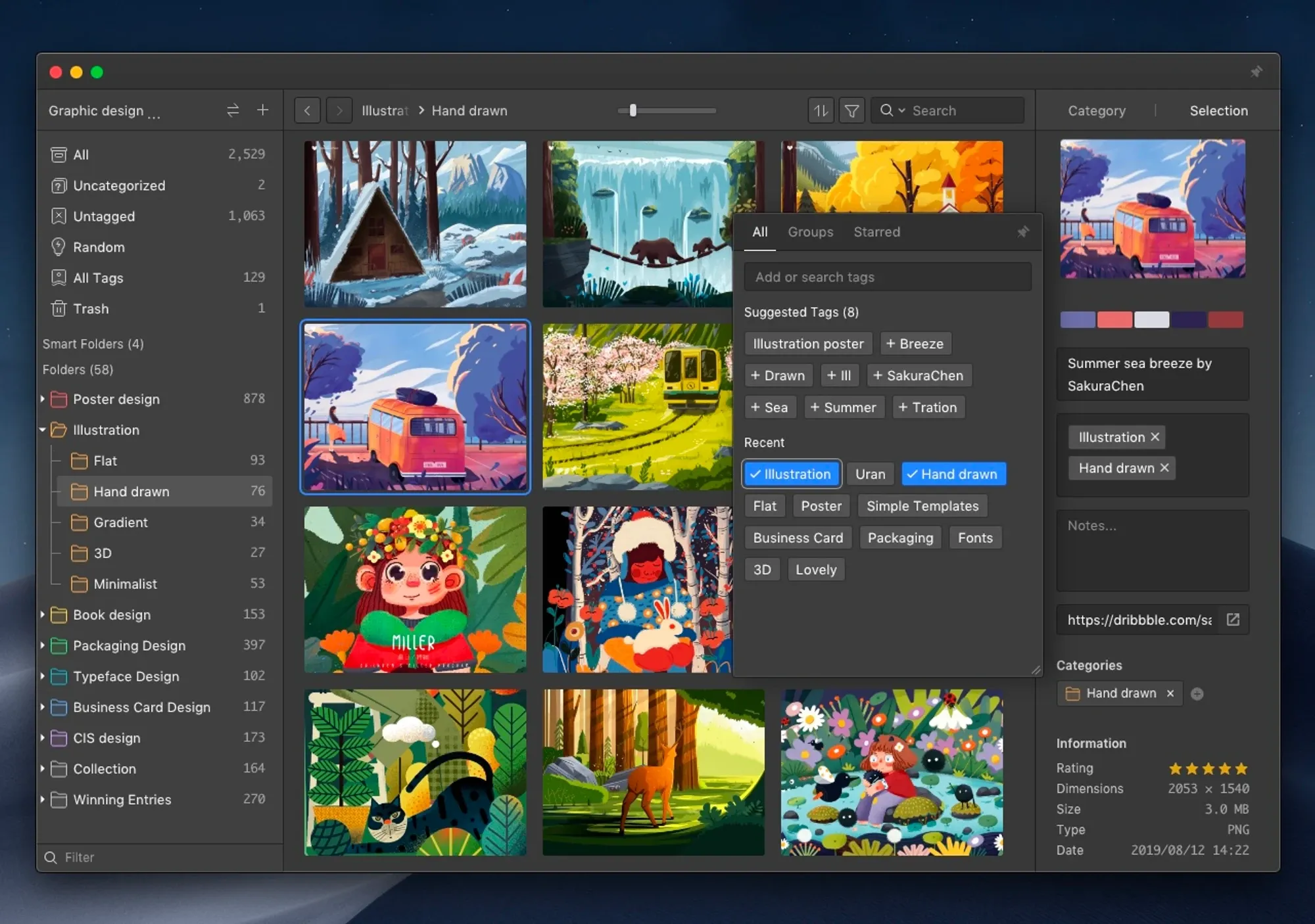
Image from Eagle - Tagging
As you build up on your ideas, it's important to keep it organized in a way that makes sense for you and your project. One way to do this is by categorizing your assets with folders, tags, and preview images.
Assets of all kinds, including works of art, music, and sound effects, can be stored in folders. You can further arrange your content by making subfolders within each category. For instance, you may create subfolders for each character after placing the character sprites in their own folder.
Tags are a wonderful approach to later locate a particular idea quickly. For example, you could tag all of the assets related to a certain level or boss fight. Preview images can also be helpful when trying to find a particular asset later on. All you have to do is take a screenshot of the asset and put it in the same folder as the original file.
Step 5 Invest in a management tool: 5 Best Game Asset Management Software
Organizing your game design inspiration is only half the battle – now you need a way to keep track of all those ideas, inspirations, and assets! That's where asset management software comes in.
Obviously, there are tons of different game asset management software options out there, so it can be tough to decide which one is right for you. To help you out, we've compiled a list of the five best game asset management software options:
Eagle
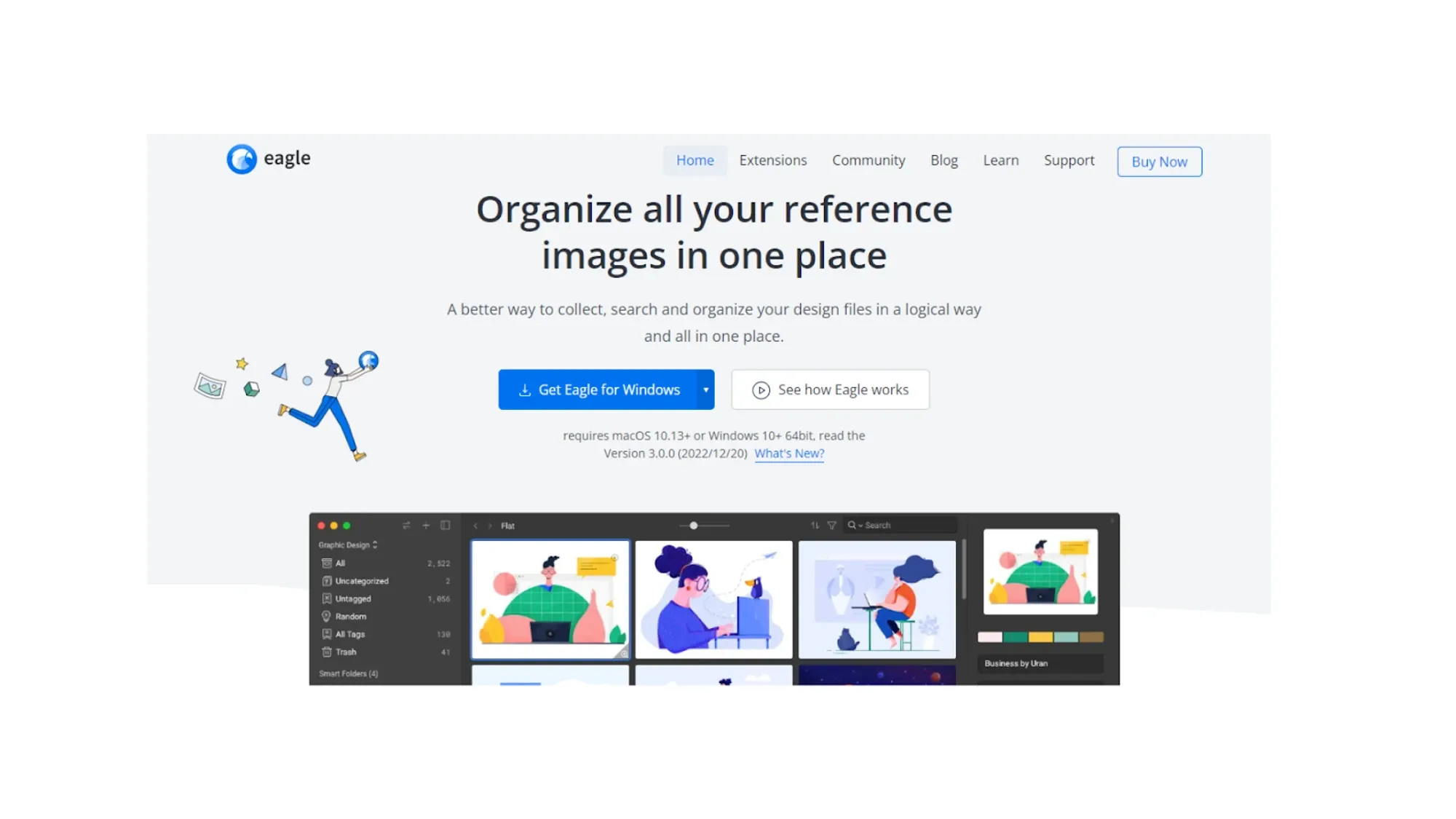
Image from Eagle
If you're looking for a tool to help organize your game design inspirations, then look no further than Eagle. This cloud-based game design organizer makes it easy to manage and organize all of your assets, from images and audio files to code snippets and game concepts.
With its intuitive and user-friendly interface, you can easily preview your assets, categorize them with folders and tags, and even collaborate with your team in real-time.
And because Eagle is cloud-based, you can access your assets from anywhere, on any device, and never have to worry about losing your work. Whether you're a solo game developer or part of a larger team, Eagle is the perfect tool to help you bring your game design ideas to life.
So why wait? Give it a try today and see the difference it can make in your game development process!
Looking for the perfect file renamer? We have it!
Blender
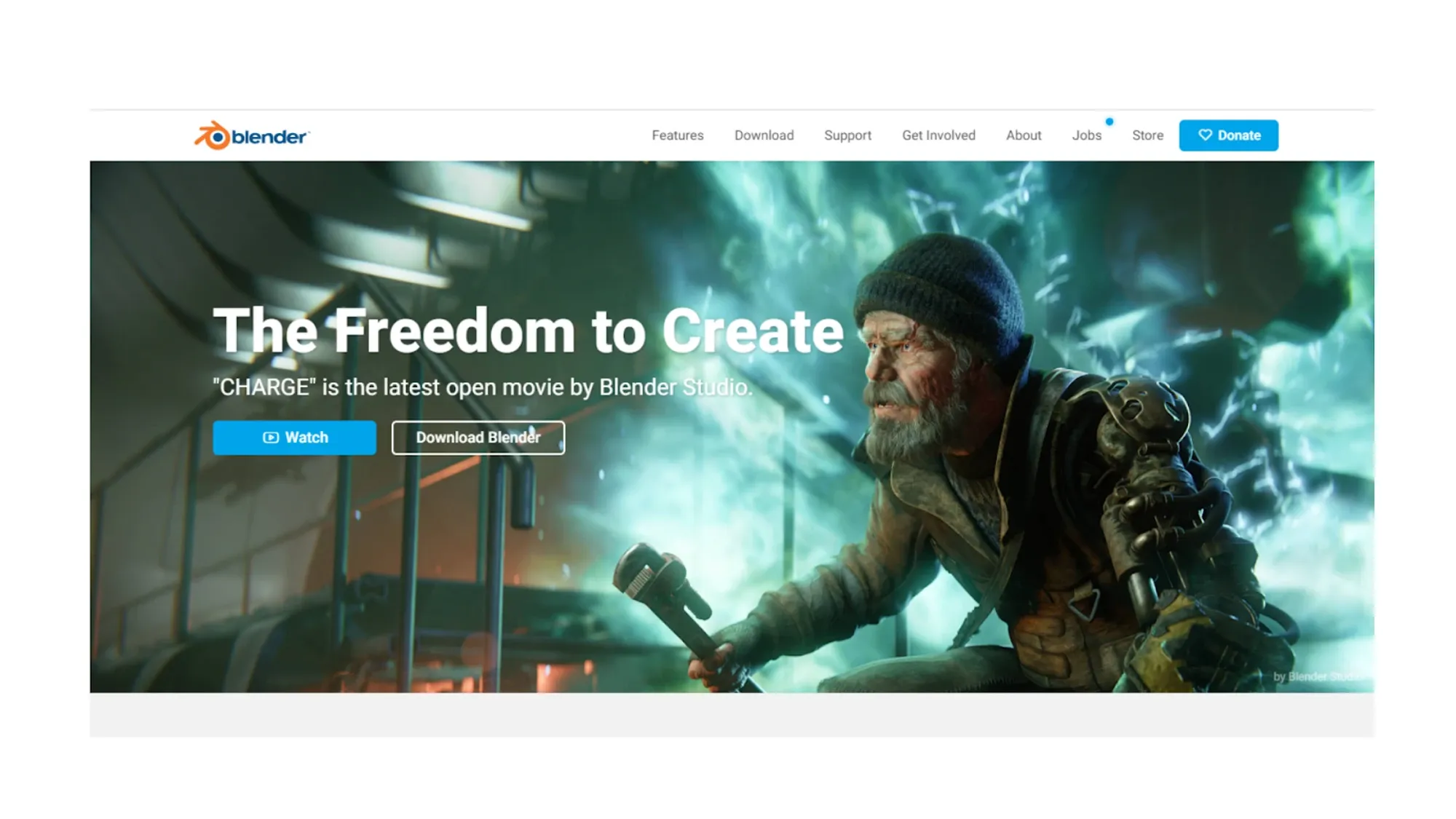
Image from Blender
Blender is not only a powerful 3D modeling software, but it's also an excellent tool for organizing your game design inspirations. This open-source software is a one-stop-shop for game designers, game lovers, and anyone who has trouble organizing their digital files.
With its comprehensive set of tools and features, you can create stunning environments, characters, and objects, all in one place, making it easier to keep track of your game design ideas.
You can boost your efficiency and streamline your work, freeing up more time to focus on what really matters - bringing your game design inspirations to life. Whether you're just starting out or you're a seasoned game developer, Blender is a great choice for anyone looking to take their game development process to the next level.
-
Construct 3
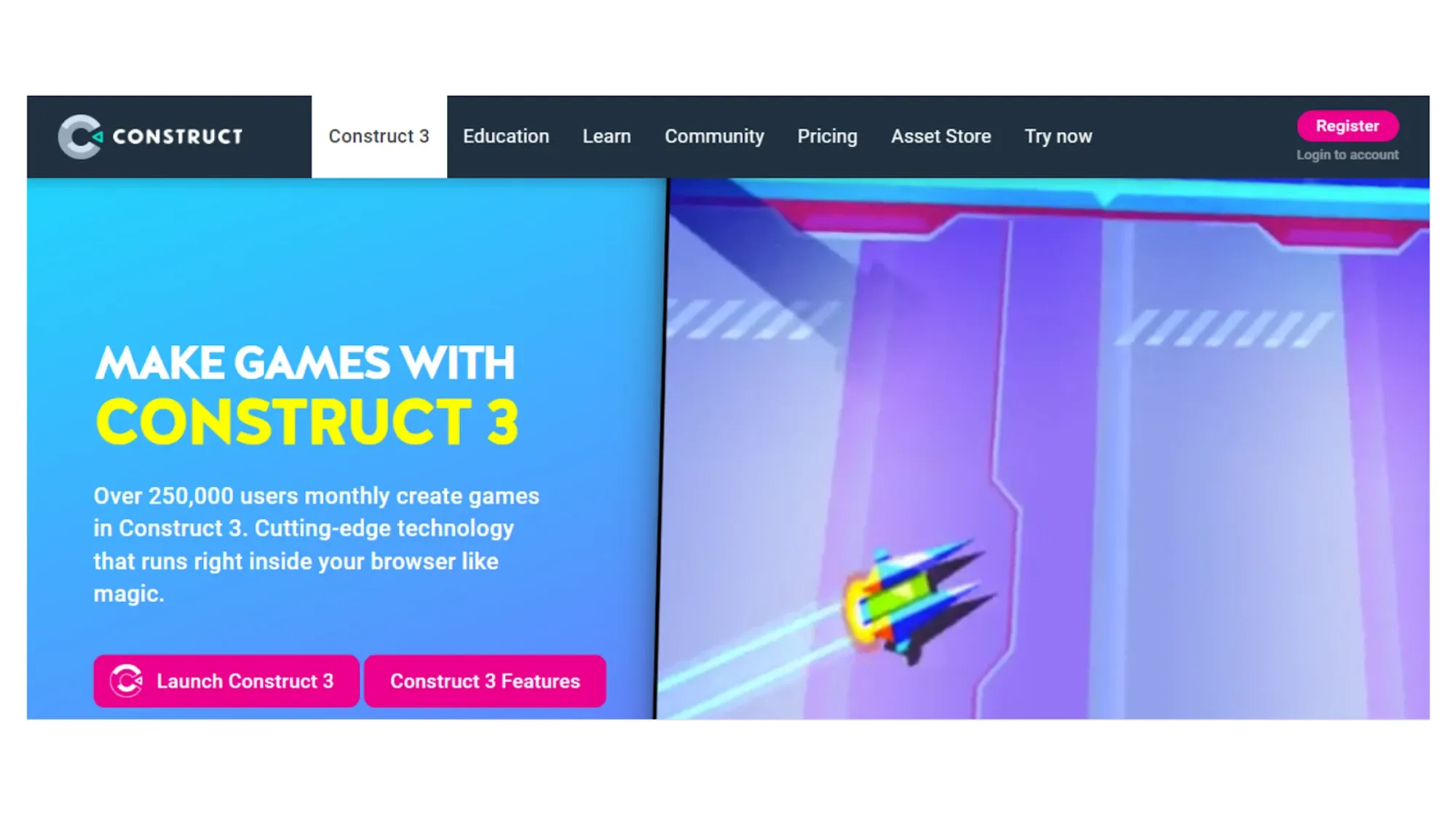
Image from Construct 3
There are a lot of software programs out there that claim to help you organize your game design inspirations, but not all of them are created equal. Construct 3 is one of the good ones. It's designed to help you quickly and easily capture ideas, inspiration, and game mechanics so you can later reference them when you're ready to start designing your game.
What we like about Construct 3 is that it's very user-friendly. Even if you're not a tech-savvy person, you should be able to figure out how to use it without much trouble. Additionally, it offers a tonne of functions that are useful for organizing stuff.
For example, there's a search function that lets you quickly find what you're looking for, and a tagging system that lets you categorize your ideas so they're easy to find later on. If you're looking for a software program to help you organize your game design inspirations, we would definitely recommend giving Construct 3 a try.
-
Game Maker
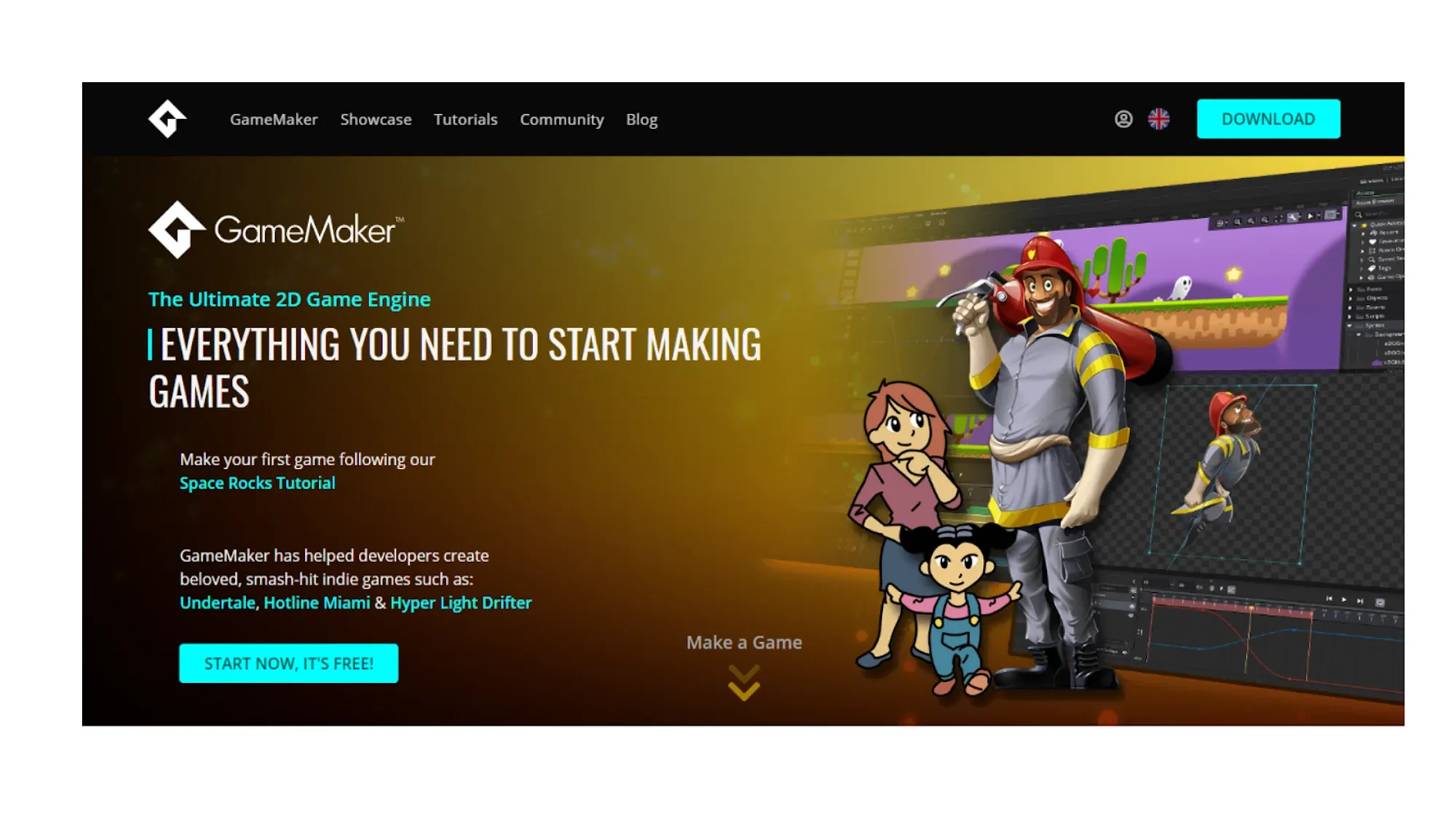
Image from Game Maker
If you have a million and one ideas for video games floating around in your head at any given time then Game Maker is a great software tool to help organize and manage your game design inspirations. It is simple to use and packed with features that make game design enjoyable and effective.
The ability to design unique objects and events, the drag-and-drop user interface, and the integrated tutorials are some of our favorite features. Not only is Game Maker great for organizing your game design ideas, but it's also really handy for prototyping and testing out gameplay mechanics.
With its flexible event system, you can quickly create functioning prototypes without having to write a lot of code. And because Game Maker is cross-platform, you can deploy your prototypes on Windows, Mac, Linux, iOS, Android, and HTML5 with just a few clicks. So whether you're a seasoned game designer or just starting out, we highly recommend giving Game Maker a try.
-
Unreal Engine
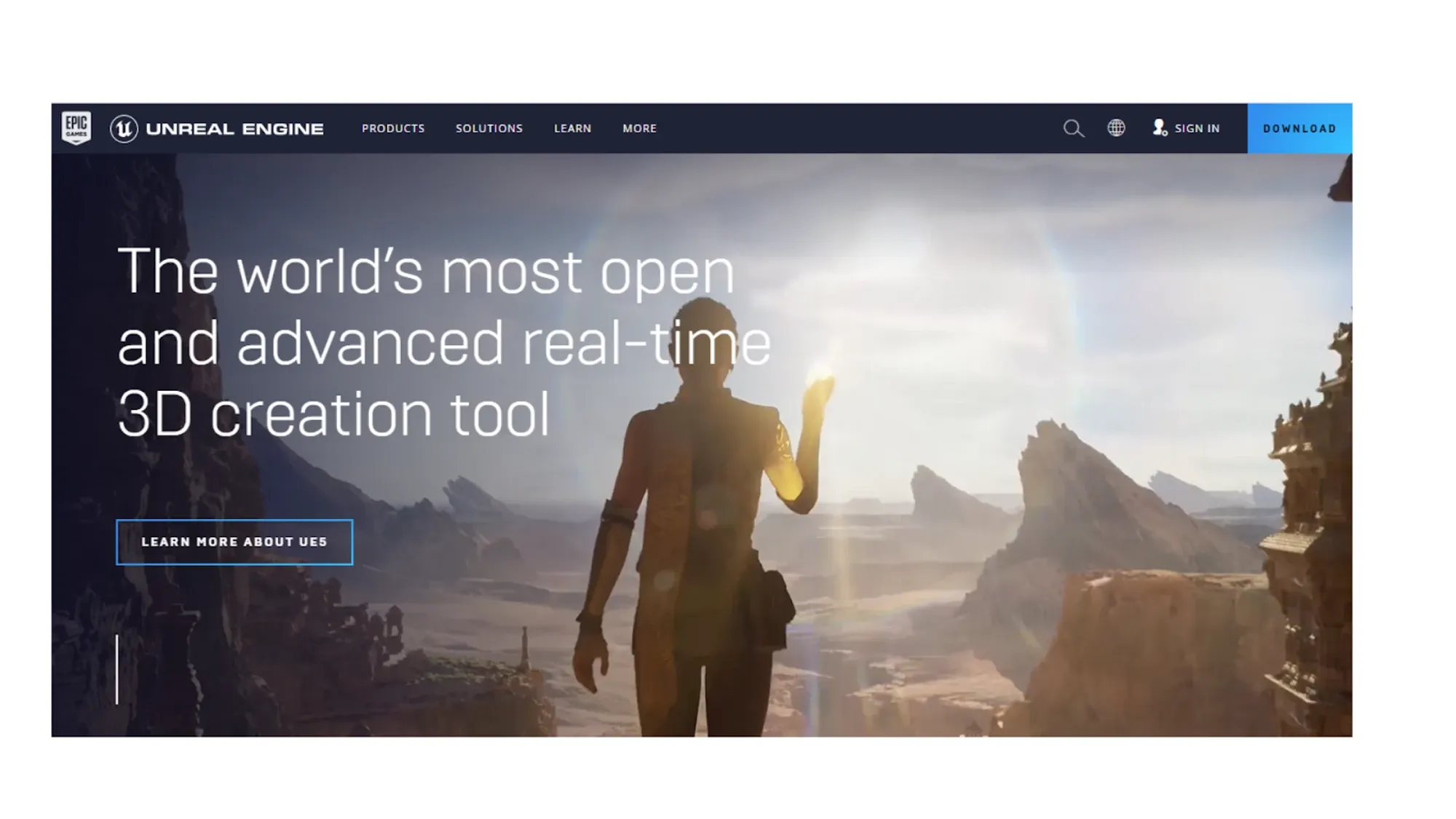
Image from Unreal Engine
Unreal Engine is one program that actually delivers on its promise. Here's why Unreal Engine is a great game design organizer:
For starters, Unreal Engine has a really intuitive interface that makes it easy to drag and drop assets into place. This is important because when you're trying to organize your thoughts, the last thing you want is to be fumbling around with a complicated interface. With Unreal Engine, you can quickly and easily create a prototype of your game idea so you can start refining it.
Another reason why Unreal Engine is such a great game design organizer is because it allows you to easily collaborate with other designers. If you're working on a team, being able to share your ideas with others and get feedback quickly is crucial. With Unreal Engine, you can share your prototypes with anyone who has the program installed, which makes iterating on ideas much easier.
Finally, Unreal Engine provides a ton of resources and tutorials so you can learn how to use all of its features. If you're new to game design or just need some inspiration, browsing through the Unreal Engine marketplace can give you some great ideas. A sizable online community of UE users is also available, and they are all too willing to assist beginners.
Ready to Start? Here’s a list of must-have tools for game designers.
Step 6 Constantly Backing Up Your Game Inspiration in a Secure Place
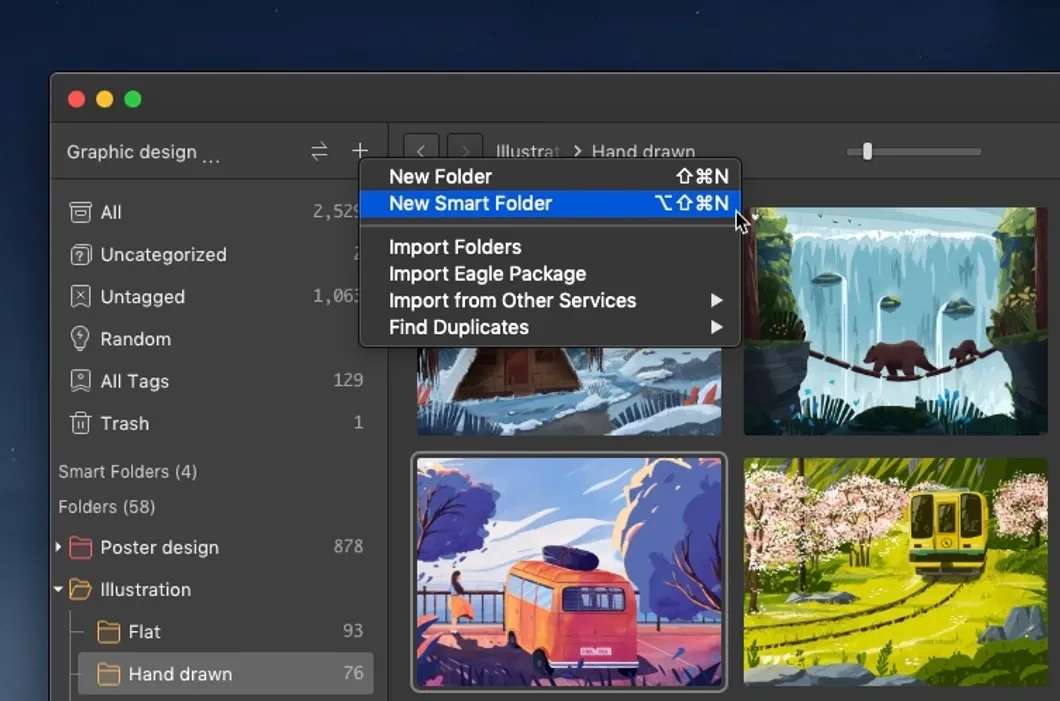
Image from Eagle - Create a ‘Smart Folder’
Finally, it's important to constantly back up your game design ideas in a secure place. There are a few different ways you can do this, but the most important thing is to make sure you have at least two copies of everything: one that you keep on your own computer or hard drive, and one that you store off-site (preferably in the cloud).
This way, you'll always have a backup to rely on in case something happens to your primary copy.
There are a number of cloud storage services out there (Dropbox, Google Drive, iCloud, etc.), so find one that works for you and make sure all of your game design inspiration is safely backed up. And once you've done that, you can rest assured knowing that your creativity is safe and sound – no matter what happens.
Want to create professional 2D, 3D video games without worrying about budget limitations? Find free game assets here!
Conclusion
In closing, by taking the time to organize and structure your design process you are setting yourself up for success. It can be difficult to remove creative blocks when working on game designs but with a few simple tips you can make the process easier.
By understanding what type of inspiration works best for you, where to find it and how to store it efficiently, you will be able to tackle game design challenges more quickly and effectively.
Spice up your game! Organize Your Game Design Ideas With Eagle today!
Image from Eagle App user JeFawk's Spaghettorium, Game Developers



